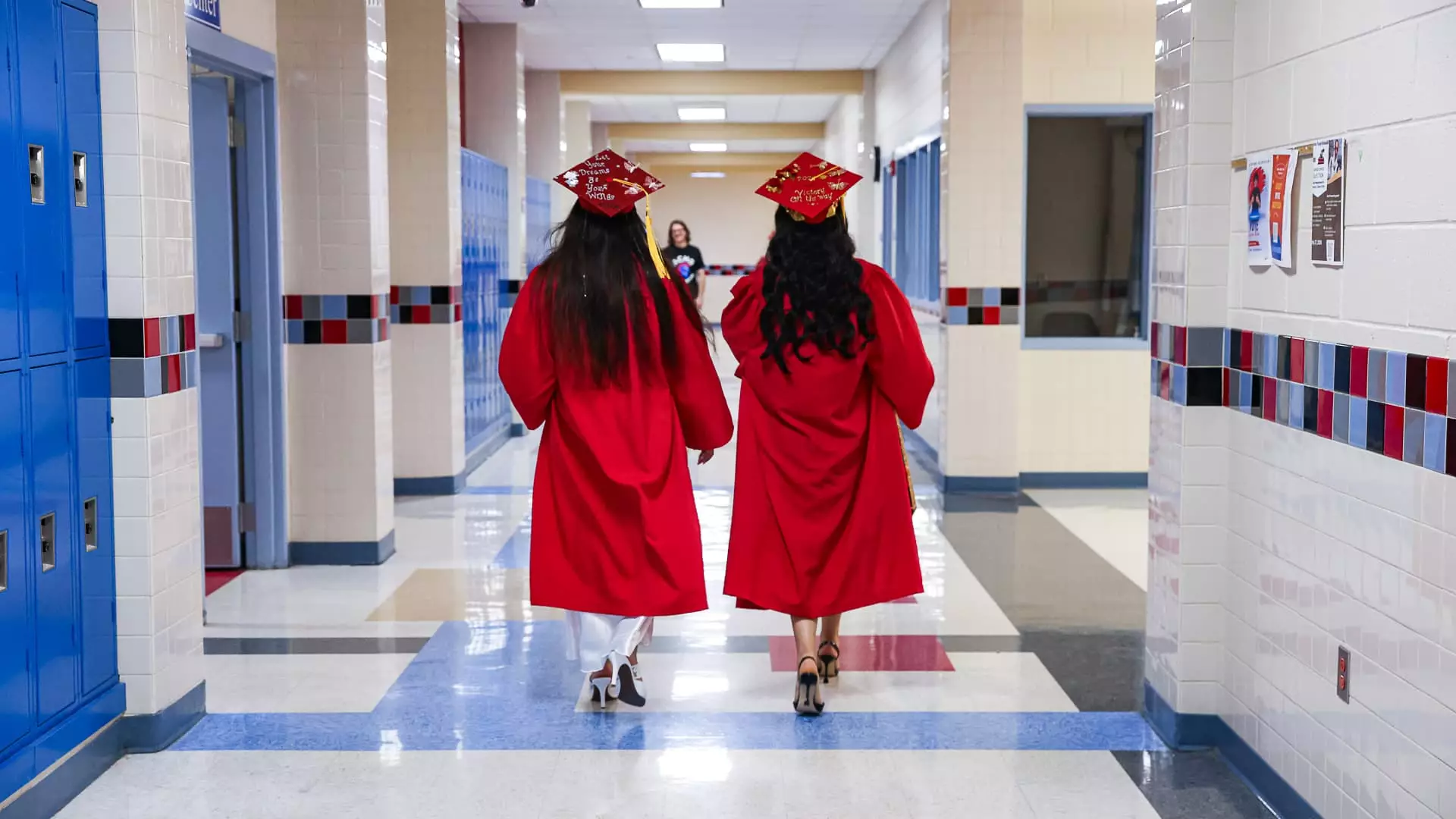As the U.S. gears up to plunge its latest cohort of ambitious high school graduates into the expensive world of higher education, we are confronted with a heartbreaking paradox: while our nation prides itself on being a land of opportunity, an overwhelming burden of student debt looms like an ominous cloud over the dreams of millions. The U.S. Department of Education’s recent announcement to resume collections on federal student loans, which had been paused during the pandemic, is a stark reminder of the burdens past generations of borrowers carry. With approximately 42 million Americans entangled in the web of student debt, we find ourselves at a defining moment where the system is not just broken; it is hemorrhaging hope.
The Cost of College is Exploding
Currently, a significant number of high school seniors preparing to embark on their journey toward a college degree will take out loans amounting to an average of $40,000, a staggering increase from the previous year. This figure not only reflects a grim reality but also indicates a troubling trend in which higher education is becoming an unattainable luxury for many. According to reports, the cost of college tuition has seen annual increases averaging 5.6% since 1983, easily outpacing inflation and encumbering future students with debt that might take decades to clear.
Michele Zampini, a leader at The Institute for College Access & Success, aptly characterizes the situation as one in which we “haven’t been able to get our arms around the college affordability problem.” This sentiment underscores what too many families already know: each year brings fresh enrollees while many current borrowers are still wrestling with their existing debts. As the cycle continues, the impact can only be described as a pervasive crisis, where the prospect of obtaining a degree leads not to empowerment but to economic shackles.
The Toll of Borrowing
It is critical to understand the implications of such debt. Over one-third of the projected graduating class of 2025 is expected to take on loans, rendering the idea of a debt-free future for many a distant dream. Additionally, the soaring outstanding student debt now surpasses a staggering $1.6 trillion, a figure that illustrates a broader failure to address the issue of college affordability head-on. Families are increasingly caught in a bind, covering 48% of college expenses—up from 38% just a decade ago. As reported, most individuals cannot afford to pay hefty tuition fees out of pocket, forcing students and families alike to rely on loans that lead to prolonged financial hardship.
Profit Over Promise
The underlying structure of higher education also invites scrutiny. U.S. Secretary of Education, Linda McMahon, has starkly criticized colleges and universities for operating as “nonprofits” while profiting massively from federal loan subsidies. The reality is that these educational institutions often benefit disproportionately from the very system designed to provide access. Notably, state cuts to higher education funding have exacerbated tuition hikes, thrusting students deeper into the abyss of debt.
Once, government funding bore the brunt of college expenses, covering about three-quarters of overall revenue; today, that share has diminished significantly, forcing students to bear the heavy financial burdens once shouldered by the state. The innocence of the pursuit of knowledge has been marred by an insidious profit motive, exploiting the aspirations of students and their families.
The Need for Systemic Change
Despite significant efforts aimed at mitigating the debt crisis—most notably through initiatives for student loan forgiveness—the broader problem persists. We find ourselves at a crossroads, with a system that seems more invested in turning a profit than in fostering genuine educational growth and accessibility. The comprehensive efforts required to tackle this crisis are noticeably absent, leaving a generation burdened by debts they’re unlikely to clear.
As we watch the next wave of students step up to the plate, committed to enhancing their futures through education, we must acknowledge our role in perpetuating a cycle of financial despair. The imperative for reform cannot be overstated; education should liberate and empower, not ensnare future generations in cyclical debt anxiety. It is time for collective action that prioritizes the need for affordability and access in higher education above all else. The stakes are simply too high to leave the student loan crisis unaddressed any longer.


Leave a Reply